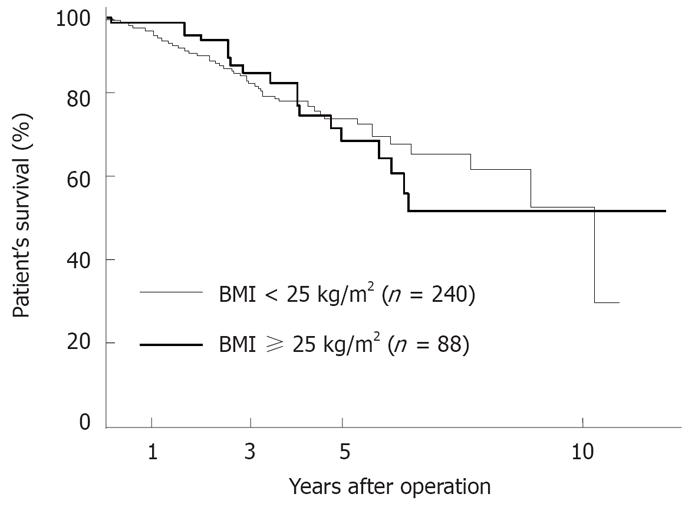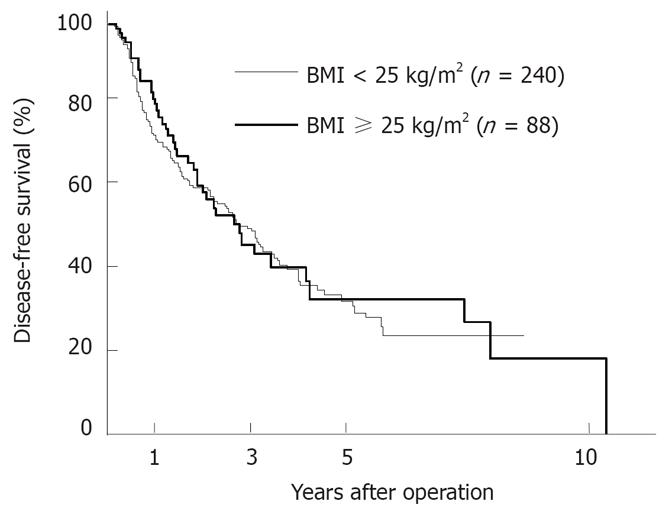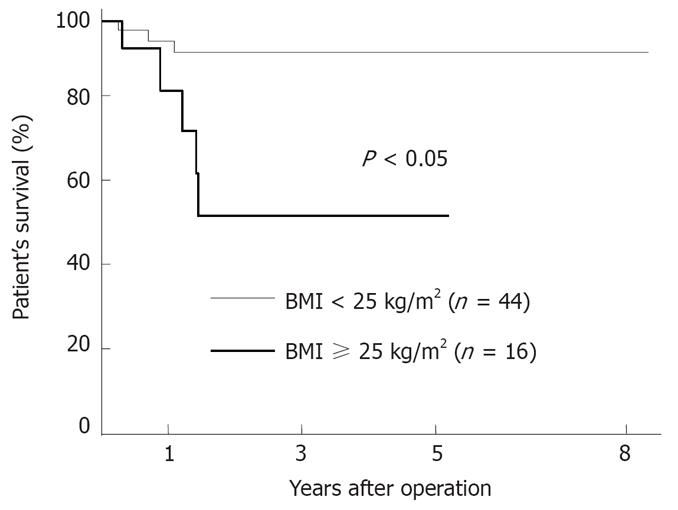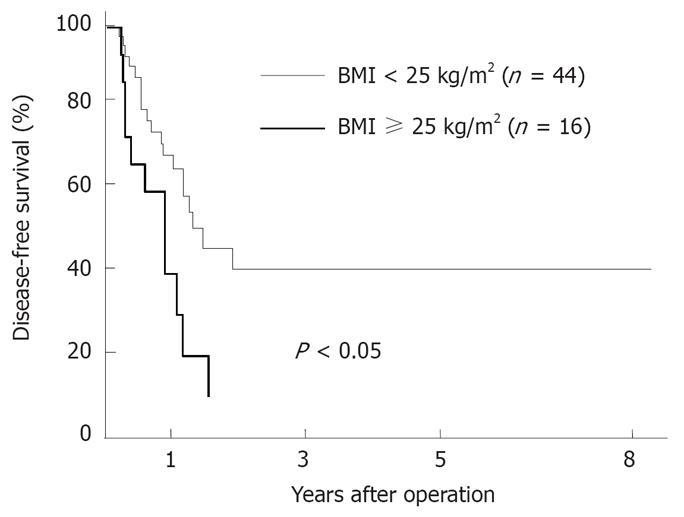Copyright
©2008 The WJG Press and Baishideng.
World J Gastroenterol. Mar 14, 2008; 14(10): 1553-1558
Published online Mar 14, 2008. doi: 10.3748/wjg.14.1553
Published online Mar 14, 2008. doi: 10.3748/wjg.14.1553
Figure 1 Comparison of the survival curves after a primary hepatectomy in the nonobese group (BMI < 25 kg/m2, n = 240) versus the obese group (BMI ≥ 25 kg/m2, n = 88).
The patient’s survival rate in the nonobese group did not differ significantly from that in the obese group.
Figure 2 Comparison of the survival curves after primary hepatectomy in the nonobese group (BMI < 25 kg/m2, n = 240) versus the obese group (BMI ≥ 25 kg/m2, n = 88).
No significant difference in the disease-free survival rate between the two groups was observed.
Figure 3 Comparison of the survival curves after repeat hepatectomy in the nonobese group (BMI < 25 kg/m2, n = 44) versus the obese group (BMI ≥ 25 kg/m2, n = 16).
The patient’s survival rate in the obese group was significantly lower than that in the nonobese group (P < 0.05).
Figure 4 Comparison of the survival curves after a repeat hepatectomy in the nonobese group (BMI < 25 kg/m2, n = 44) versus the obese group (BMI ≥ 25 kg/m2, n = 16).
A significantly shorter disease-free survival was found in the obese group than in the nonobese group (P < 0.05).
- Citation: Utsunomiya T, Okamoto M, Kameyama T, Matsuyama A, Yamamoto M, Fujiwara M, Mori M, Aimitsu S, Ishida T. Impact of obesity on the surgical outcome following repeat hepatic resection in Japanese patients with recurrent hepatocellular carcinoma. World J Gastroenterol 2008; 14(10): 1553-1558
- URL: https://www.wjgnet.com/1007-9327/full/v14/i10/1553.htm
- DOI: https://dx.doi.org/10.3748/wjg.14.1553












